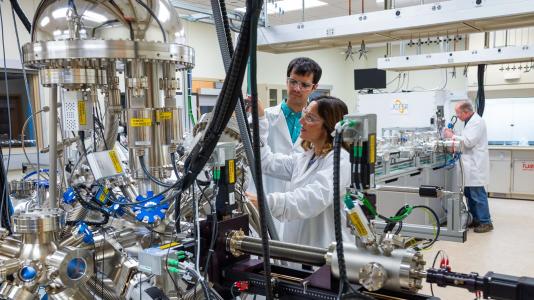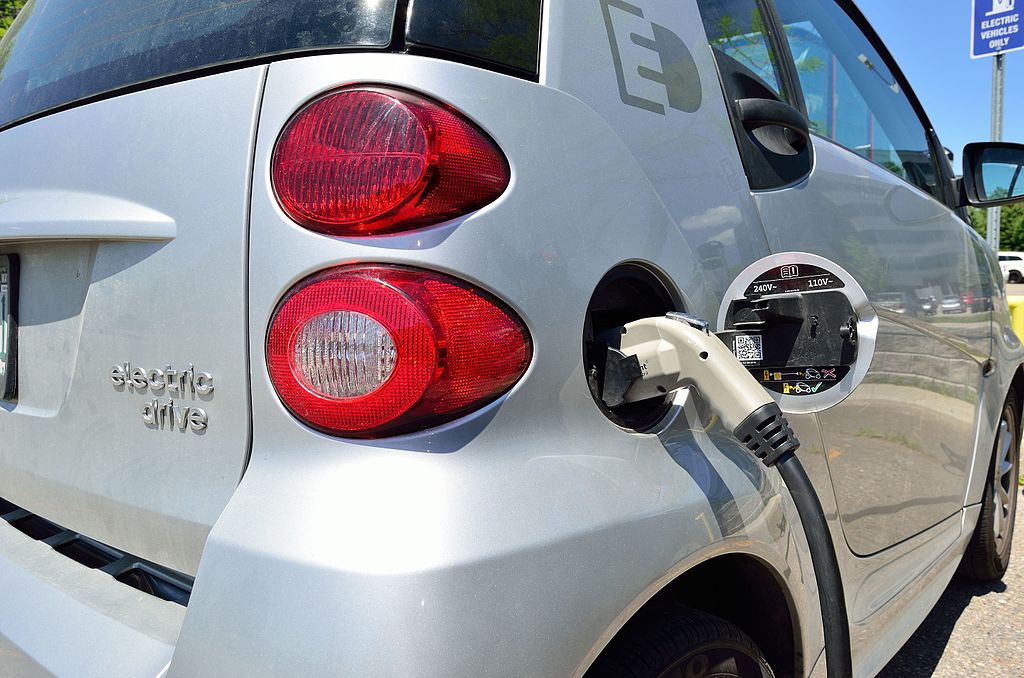The Joint Center for Energy Storage Research (JCESR), a US Department of Energy (DOE) Innovation Hub led by DOE’s Argonne National Laboratory is focused on new battery development. Collaborating researchers invented technologies that go beyond conventional lithium-ion technology and have produced more than 30 patents now available for licensing. These patents are technologies including redox flow, lithium-sulfur, multivalent and solid-state.
“The portfolio of intellectual property we’ve developed illustrates our fundamental understanding of how to build, from the atomic level up, molecules that interact and create stable, functioning battery materials,” said Brian Ingram, Argonne materials engineer and JCESR researcher.

Although the market for lithium-ion batteries is booming, the technology is not without its drawbacks. Manufacturing is expensive, they can cause fires—and, therefore, require safety precautions. Lifetime is another limiting factor in current lithium ion batteries.
JCESR researchers are developing alternatives including redox flow, multivalent ion, lithium-sulfur, solid state, and lithium metal.
Redox flow
Redox flow batteries deliver lower amounts of energy over longer durations, compared to lithium-ion. Flow batteries use reusable, externally stored electrolytes, which can make them less expensive, safer, more flexible and adaptable when compared to lithium-ion. The DOE has funded development of redox flow technology as a part of its Long Duration Storage Shot. In studies conducted by JCESR, researchers discovered ways to make redox flow batteries more efficient and energy dense, and they have been awarded patents that address limitations in existing redox flow batteries and another emerging battery technology, non-aqueous flow.
Multivalent-ion
Multivalent-ion batteries can have a higher charge density compared to lithium due to the metals used. Magnesium and calcium, for example, are two of the metals and they are not only more abundant than lithium but are more sustainable. JCESR was awarded a patent on the development of a stable electrolyte that would maintain performance over time.
“The electrolytes that have existed within this space are stable only under a very narrow scope of conditions. With JCESR, we’ve done a lot to expand that stability range,” said Ingram.
Lithium-sulfur
Lithium-sulfur (Li-S) batteries use sulfur instead of using a cathode comprised of nickel, manganese, and cobalt, (NMC). Sulfur has shown to have a much higher energy density, and it is very inexpensive. However, the challenge is that when Li-S batteries are discharged, there is a “polysulfide shuttle,” meaning that polysulfides can accumulate in the battery, thus reducing its cycle life. JCESR researchers have developing materials and processes to address this issue, and the resulting intellectual property includes patents for binding materials to prevent polysulfide material from diffusing throughout the battery, as well as for making sulfur cathodes.
“How sulfur is spread out within the cathode is extremely important. You want the sulfur particles not to be in big chunks but rather smaller pieces so that you can have more interfaces where reactions can happen,” said Lei Cheng, Argonne chemist and JCESR researcher. “In our patent we’ve put forward a process for making the sulfur in a way that maximizes the number of interfaces or active sites in the material.”
Solid-state and lithium metal
The advantage of solid-state batteries is that they can hold more energy and charge faster than lithium-ion, making them attractive to the electric vehicle manufacturers. They also have the advantage of using solid electrolytes, so they are non-flammable. Lithium metal is a type of solid-state battery, which has the same problem as solid-state, which is that they form dendrites that can limit the battery life and safety. JCESR researchers have patented a coating for the anodes that they developed in response to this problem. They’ve also developed processes and battery designs intended to enhance efficiency and extend the battery’s life cycle.
This content is protected by copyright and may not be reused. If you want to cooperate with us and would like to reuse some of our content, please contact: editors@pv-magazine.com.









Find us a battery that is as cheap as Lead-Acid deep cycle batteries and weighs the same or less and won’t catch fire but lasts 10,000 cycles instead of lead-acids 2,200 cycles and our energy storage for home, businesses and utilities could be solved. What ever happened to Sonnen?
July 21, 2021
Sonnen battery still running after 28,000 full charge cycles
by Marian Willuhn
From pv magazine Germany
German storage system manufacturer Sonnen published test results that indicate the longevity of its products after extended use. In laboratory tests, the lithium iron phosphate (LFP) battery cells, which are also used in the company’s “solar battery,” reportedly withstood 28,000 charging cycles.
Sonnen also tested modules consisting of 200 cells. It guarantees that the modules will retain 80% of their original capacity after 10,000 cycles. According to its latest tests, the modules retained 83% of their capacity over 10,000 cycles.
These sure beat Lead Acid and Lithium Ion. So where did this company and their batteries go?